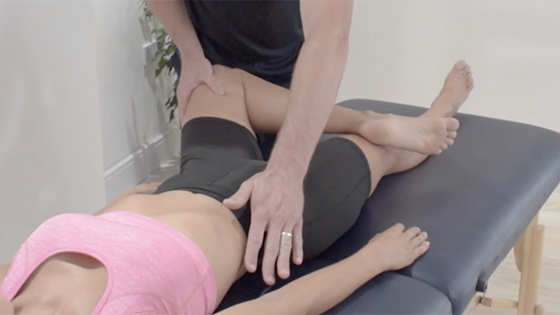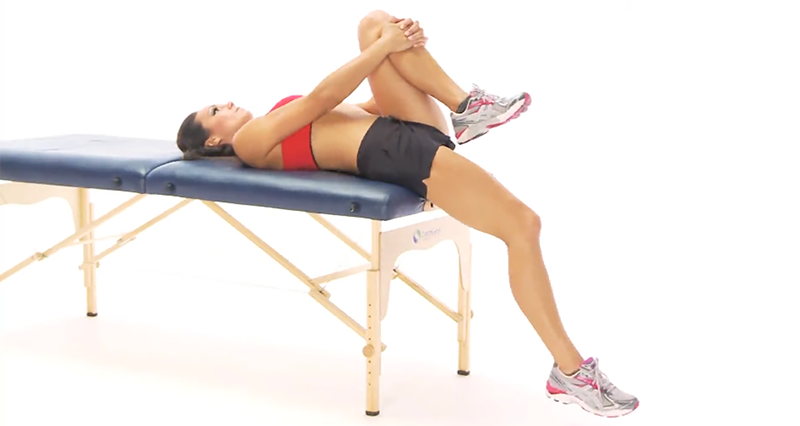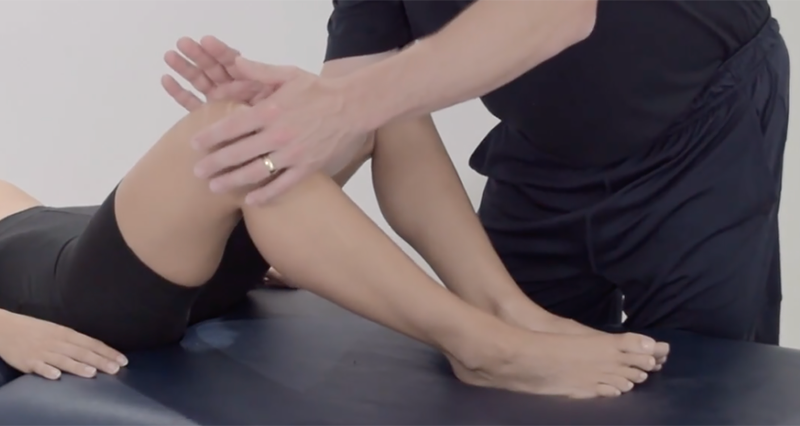The Faber test assesses hip pain. It combines hip flexion, abduction, and external rotation. In particular, it compresses the posterior hip and sacroiliac joints. As a result, helps to identify problems with the hip, lower back and sacroiliac joint.
How to perform the test:

The Faber’s test for hip pain involves flexion, abduction, and external rotation of the hip. Consequently, this position compresses the posterior hip joint and sacroiliac joint, often reproducing pain in the hip, lumbar spine, or iliac region.
First, lie the patient on their back. Next, cross one leg over the other, forming a figure-four position with the foot above the knee. Stabilize the opposite hip and slowly lower the bent knee toward the treatment table.
What is a positive Faber test?
You determine the test is positive if it reproduces the patient’s hip, sacroiliac, or lumbar pain.
Considerations
Although this test has weak clinical value on its own, it is nonetheless useful as part of a cluster of tests for diagnosing hip or sacroiliac joint pain.

What injuries does the Faber test check for?
Hip Pathologies: It can spot hip joint problems like osteoarthritis, labral tears, or femoroacetabula impingement (FAI).
Sacroiliac Joint Dysfunction: If you feel pain during the test, it might mean there’s an issue with your sacroiliac joint. This could be due to inflammation, instability, or other SI joint problems.
Lumbar Spine Pathologies: The test can also reveal issues in the lower back, such as lumbar disc herniation, spondylolisthesis, or other kinds of lower back pain that might spread to the hip area.
In summary, the Faber test helps pinpoint whether your pain comes from the hip, SI joint, or lower back.



